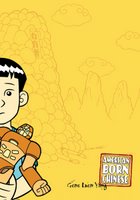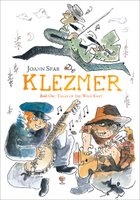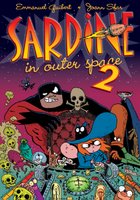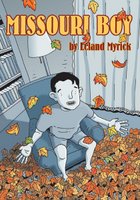Graphic Lit: First Second's Fall Line-up

As you might or might not remember, the upstart publishing company First Second debuted earlier this year to much acclaim and some rather impressive titles (“Fate of the Artist,” “Vampire Loves”).
Now comes the tough part — maintaining their stride. This month they unveil their new releases for the fall. Here’s a quick look at the lineup.
“Kampung Boy” by Lat
144 pages, $16.95.
In his native Southeast Asia, Lat is regarded with a devotion comparable to the adoration Charles Schulz received here. “Kampung Boy,” a thinly veiled autobiography of his childhood in rural Malaysia, is one of his finest works — a tender, funny, nostalgic look at a place that seems altogether different from our lives and yet incredibly familiar as well.
Lat’s art at first might seem too rough, too sketchy for Western audiences. All you have to do, though, is look at his drawing of a group of students trying to learn Arabic and know you’re in the hands of a master. If you can afford only one First Second book this year, make it this one.
“American Born Chinese” by Gene Luen Yang
240 pages, $16.95.

This highly ambitious book about ethnic identity incorporates three different story lines. The first involves young Jin Wang and his desperate attempts to fit in at his largely white school.
The second tells of the mythic adventures of The Monkey King, who has a bone to pick with the Chinese pantheon. The third shows how average white teen Danny’s life is ruined by his cousin Chin-Kee, who seems to embody every horrible and offensive Asian stereotype known to man.
Though seemingly unrelated at first, Yang manages to tie these three disparate tales together in a rather unique and surprisingly satisfying way. It’s a smart, well-written book that not only asks tough questions about identity and racism, but also indulges in a bit of formulist play as well. Perhaps it doesn’t answer every issue it raises, but don’t let that keep you from checking it out.
“Klezmer Book One: Tales of the Wild East” by Joann Sfar
144 pages, $16.96.

Having examined the life of a North African Jewish family in “The Rabbi’s Cat,” Sfar heads north to Europe at the turn of the last century for this tale of a motley group of musicians who band together to perform a new type of Jewish music.
Sfar adopts a much looser, watercolor style here than found in his previous works. One color, such as yellow, frequently dominates a page, giving the book a fauvist quality and often highlighting the emotional and even musical drive of the story.
Basically it’s another wonderful book from Sfar, further underscoring what a significant, powerful author he is.
“Sardine in Outer Space 2” by Emmanuel Guibert and Joann Sfar
128 pages, $12.95.

More outer space hi-jinks from Sfar and Guibert, as young space pirate Sardine, her uncle, Captain Yellow Shoulder, and best buddy Little Louie continue to outwit and thwart the evil Supermuscleman and his henchman, Doc Krok.
The tales have a surreal, anything-goes quality that will appeal to kids with a deep appreciation for the offbeat, not to mention the downright silly. Parents might object to some of the gross-out humor, but it’s hard to say no to a book that includes a giant monster with TVs for fingernails and a removable bellybutton.
“Journey Into Mohawk Country” by George O’Connor
144 pages, $17.95.

O’Connor adapts the diary of a 17th-century Dutch trader and his winter trek through what eventually would become known as Manhattan in this graphic novel.
O’Connor’s art, as well as his eye for detail, is impressive. He obviously did an enormous amount of detail, but he also has to add a lot of asides and superfluous character bits in order to pad out what is essentially a rather dry journal. You’re too busy noticing all the stuff O’Connor had to add to keep the narrative moving along to become involved in the story. It’s ambitious, but “Mohawk” will probably best be enjoyed by those with a specific interest in this period of history.
“Missouri Boy” by Leland Myrick
112 pages, $16.95.

This is easily the weakest book in First Second’s fall lineup, and possibly the weakest book they’ve published so far.
Myrick provides snapshots of his small-town childhood, but the result feels disjointed and mundane. In trying to be poetic, the text comes off as overly ponderous, the result of trying to inflate one’s memories with more importance than they can bear.
The biggest problem is the tales don’t connect in any real narrative sense, making the book feel like a loose collection of events that bear no real relation to one another. Myrick’s stories might mean a lot to him, but he doesn’t manage to convey to the reader why that’s so.
Copyright The Patriot-News, 2006

0 Comments:
Post a Comment
<< Home